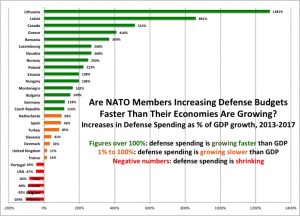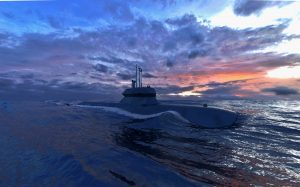Russians Tried to Jam NATO Exercise; Swedes Say They’ve Seen This Before
Posted on
WASHINGTON: Few shocked faces were on display at NATO headquarters over the alleged Russian attempt to disrupt GPS signals during this month’s Trident Juncture exercise in Norway.
The massive drill — which boasted 40,000 troops from all 29 NATO members, along with 70 ships, 150 aircraft, and 10,000 ground vehicles moving around Norway — was the alliance’s largest post-Cold War exercise. And Moscow took notice.
Last week, Norway accused Russia of trying to jam GPS signals from a Russian base on the Arctic Kola peninsula during the exercise, and Finland on Monday summoned the Russian ambassador to express “concern regarding GPS signal disruption” earlier this month.
And now Sweden has some questions.
“It’s obvious something happened,” Gen. Micael Bydén, Supreme Commander of the Swedish Armed Forces, told me on the sidelines of the Halifax Security Forum over the weekend. He said he doesn’t have any more information than the Norwegian government has provided, “but it was obviously there.”
Bydén said that none of his 2,200 troops or four Gripen fighters taking part in the exercise were in danger, but the jamming was part of a larger pattern of Russian moves designed to keep NATO and its aligned allies Sweden and Finland off balance.
Just days before Trident Juncture kicked off, Moscow informed Norway that it would be conducting its own drill at sea near the NATO exercise, forcing NATO commanders to take more care where they sailed and flew in international waters to steer clear of the Russians.
“You need to consider it and be aware of it,” Byden said, “this affects the planning in a negative way. But you have to respect it.” He added that his government has seen similar things happen in the Baltic Sea over the past year. Russia has informed Sweden and Poland that Russian forces would conduct drills and testing near international shipping lanes “from 8 o’clock in the morning until 8 o’clock at night,” causing headaches for commercial fleets.
“In our case during this summer, one of the restriction areas was exactly where there is a corridor for civilian air traffic from our major airport to Europe, so we had to make detours,” Byden told me. “So this is new. A new way of working. They do it because they can and would like to just say ‘here we are.’”
The participation of Sweden and Finland in Trident Juncture — an Article 5 exercise that practiced the response the entire alliance might undertake should one of its members be invaded — was particularly vexing to Moscow, as both countries have normally shied away from such participating so fully in similar NATO self-defense exercises.
In that sense, the attempted jamming wasn’t a shock.
Pentagon spokesman Eric Pahon told me that the US is “keenly aware cyber-attacks and electronic warfare are being used on and off the battlefield with alarmingly greater frequency and severity,” and “we are directly addressing these expanding threats, increasing our ability to deal with these challenges and developing new ways to defend against them.”Part of that response includes spending on military modernization across the NATO alliance and elsewhere.
While Sweden isn’t bound by the pledge of NATO members to work toward spending 2 percent of its GDP on defense, Stockholm is also pushing forward with an ambitious spending and modernization plan.
In May, Byden plans to release a new defense plan for 2021-2025 that includes new A26-class submarines built by SAAB to replace the two-decade old Gotland-class subs, new fighter planes, and bigger investments in command and control and surveillance and sensor technologies.
The ambitious plans won’t come cheap. “We need to put more money into the budget to reach our ambitions,” Byden said, estimating that by 2035 both the budget and the size of the force would have to double from its current size to meet commitments overseas while still keeping an eye both on the Baltic and the far north.
“We have started our first steps toward building a new defense force,” he said, but the money isn’t there yet. “There is a broad consensus politically that we need to spend more money on security and defense,” but politics is clouding the future. National elections in September have yet to produce a government as parties on the left and right continue to struggle to form a ruling coalition after an anti-immigrant, far-right nationalist party picked up considerable support.
So while Byden’s modernization plan will be released in May, it remains unclear to what government he will submit it, and what it’s ultimate priorities might be.
Subscribe to our newsletter
Promotions, new products and sales. Directly to your inbox.




